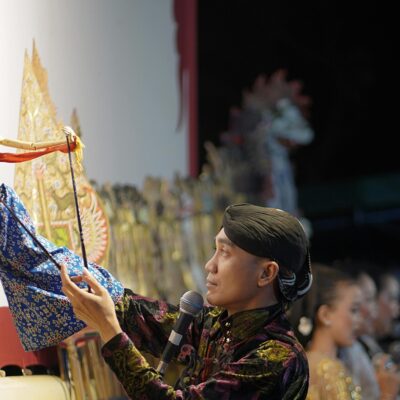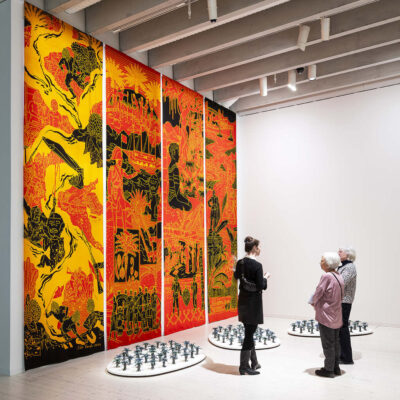Religiosity in Indonesia is institutionalised as a concern of the state, unlike in many other countries where religious affiliation is considered a matter of private conscience. The enactment of Presidential Decree No. 1/PNPS/1965 formalised this position by obliging every Indonesian citizen to adhere to one of the officially recognised religions—initially five at the time of its promulgation, later expanded to six.
This legislation effectively marginalises the rich and diverse array of Indigenous and non-recognised belief systems that have historically flourished across the Indonesian archipelago, rendering them invisible within the framework of state-sanctioned religiosity.
Redefining religion and citizenship in Indonesia: Between state policy and lived religion
In the context of religious pluralism in Indonesia, defining ‘religion’ is not merely a theoretical concern but one with profound legal and political consequences. The state’s categorisation of religion directly affects civil rights, access to public services, and recognition within the national framework. While scholars such as Leonid Swidler and Paul Mojzes (2000), and Sindung Haryanto (2020), offer expansive conceptions of religious life—emphasising core elements such as creed, code, cult, and community—the Indonesian state applies a more rigid, bureaucratic definition rooted in administrative convenience.
Only six religions—Islam, Protestantism, Catholicism, Hinduism, Buddhism, and Confucianism—are officially recognised by the Indonesian government. These religions are granted full legal status, institutional support, and public legitimacy. In contrast, other belief systems, including syncretic, heterodox, and Indigenous religions, are excluded from formal recognition. To qualify as an official religion, a belief system must meet state-imposed criteria, including monotheism, belief in a prophet, a codified sacred text, and affiliation with a global religious tradition.
This narrow conception systematically marginalises Indigenous and non-mainstream communities. Lacking formal recognition, followers of these belief systems face structural barriers: difficulties in registering marriages, obtaining birth certificates, and accessing education, healthcare, or employment. Moreover, state documents often compel individuals to falsely declare affiliation with one of the six official religions, effectively erasing their religious identity and subjecting them to epistemic violence—a systematic denial of their knowledge systems and worldviews.
Socially, adherents of Indigenous religions are stigmatised and positioned as outsiders to the moral and cultural fabric of the nation. This exclusion not only diminishes their religious freedom but also undermines their civic participation, relegating them to a precarious form of second-class citizenship. The result is a system that privileges religious orthodoxy while systematically marginalising alternative forms of belief and spiritual practice.
In Indonesia, Indigenous peoples are often identified as adherents of native or traditional faiths. However, affiliation with an Indigenous religion is not solely determined by ethnicity or birth within a particular community; rather, it is a personal choice made by individuals who consciously follow the teachings of indigenous belief systems. According to The Encyclopedia of Belief in the One Supreme God—a term introduced by the state to classify Indigenous religions—published by the Ministry of Education and Culture in 2017, there are approximately 90 Indigenous religious organisations in Indonesia, including 40 paguyuban (associations), six perguruan (an informal school for spirituality and sometimes martial arts), and one kekadhangan (brotherhood). The most prominent is Sapta Dharma, which is found widely across Java, and Parmalim in North Sumatra. However, it is regrettable that the encyclopedia only documents Indigenous religions voluntarily registered with the state. It excludes those rooted in adat (customary law) communities, such as the Marapu of Sumba and the Kajang of South Sulawesi.
Existing, but unrecognised
The marginalisation of Indigenous religions in Indonesia is deeply rooted in the historical legacy of colonial administration and the institutional bifurcation between religion and adat (customary law). This division was formalised during the Dutch colonial era, largely under the influence of Christiaan Snouck Hurgronje, a leading orientalist and political advisor. His recommendations emphasised separating Islamic religious authority from customary practices to facilitate colonial control. The Dutch adopted policies that recognised Islam as a distinct religious entity while relegating Indigenous religion to the domain of adat. This artificial distinction generated social cleavages that persist today.
The colonial strategy aimed to suppress political Islam while promoting ritualistic forms of religion and strengthening alliances with adat communities perceived as politically passive. Although Islam and adat had previously coexisted and even synthesised with many local traditions, colonial intervention formalised their opposition. Adat became increasingly regulated under colonial legal structures, which weakened its organic role in religious and communal life. Over time, these structural divisions bred suspicion among Islamic groups toward adat communities, who were viewed as collaborators with colonial power.
In the early 20th century, the intensification of anti-colonial movements introduced new complexities to the relationship between Islam, adat, and national identity. Emerging organisations such as Budi Utomo (1908), Sarekat Islam (1911), Muhammadiyah (1912), and the Indonesian Communist Party (PKI, 1914) contributed to a dynamic and ideologically plural anti-colonial landscape. These organisations would later play influential roles in shaping the ideological and religious foundations of the Indonesian state.
The drafting of Pancasila, Indonesia’s state ideology, became a key site of religious contestation. A particularly contentious issue was the proposal to mandate Islamic law for Muslims. This clause was eventually removed to preserve national unity, but a major concession was granted in the form of the Ministry of Religious Affairs, established in 1946. While initially serving Muslim communities, the Ministry gradually expanded to accommodate other state-recognised religions. Yet, Indigenous religions remained outside this institutional framework.
Post-independence Indonesia saw continued friction between Islamic and adat-based groups. The 1948 Muso Rebellion, led by the PKI, deepened national anxieties about political instability. The rebellion’s suppression, facilitated by both the Indonesian military and Islamic militias like Hizbullah (a paramilitary Islamic militia formed by Indonesian Muslim leaders
), led to a broader campaign against communism and perceived ideological subversives. Among those caught in this campaign were abangan communities—syncretic Javanese groups whose spiritual practices aligned with Indigenous belief systems. Lacking clear affiliation with one of the recognised religions, these groups were increasingly viewed with suspicion and targeted for repression.
The distinction between abangan and santri identities in Javanese society reflects religious differences and broader cultural, social, and political divisions. Anthropologist Clifford Geertz (1960) characterises abangan as adherents of a syncretic religious stream rooted in Javanese tradition, where Islam is interwoven with elements of animism, Hindu-Buddhist cosmology, and local mysticism (kejawen), in contrast to santri who are associated with orthodox, scriptural Islam and the pesantren (Islamic boarding school) tradition. Comparative theologist Karel Steenbrink expands this distinction by situating abangan as a sociological category of nominal Muslims who retain local belief systems and are often marginalized by more orthodox Islamic groups. While santri emphasize strict religious observance and alignment with Islamic law, abangan practices tend to be communal, ritualistic, and closely tied to adat (customary law). Political scientist and historian Benedict Anderson further distinguishes the two by framing abangan as a politicised cultural identity that gained prominence during the rise of Indonesian nationalism and the Indonesian Communist Party (PKI), in contrast to santri, who were more commonly aligned with Islamic political movements. Collectively, these perspectives demonstrate that the abangan-santri dichotomy encompasses theological orientations and deep-rooted cultural practices, class structures, and political affiliations within Indonesian society.
During the 1950s, the political rivalry between the Masyumi Party, representing Islamic interests, and the PKI (the Communist Party), often associated with abangan and Indigenous religion, intensified. National election cycles heightened this antagonism, polarising religious and ideological affiliations. This division reached a catastrophic climax following the 1965 political purge, triggered by an alleged coup attempt on September 30, which resulted in the mass killing of PKI members and sympathisers. The ensuing violence disproportionately affected followers of Indigenous religions, who were perceived as culturally and politically deviant. In the face of an existential threat, many of these individuals converted to one of the six recognised religions to secure legal protection and social acceptance.
Even after the violence subsided, institutional discrimination against Indigenous religions persisted. A series of legislative measures further codified their marginalisation. These included the Minister of Religious Affairs Instruction No. 4/1978, which sought to regulate non-recognised belief systems; MPR Decrees II/MPR/1993 and II/MPR/1998, which reinforced the state’s emphasis on religious uniformity; and The Population Administration Law No. 23/2006, revised in 2013, which limited the ability of Indigenous believers to register their religious identity on official documents.
These regulations not only denied Indigenous religion formal recognition but also restricted their access to essential civil rights. Without official acknowledgment, they faced difficulties registering marriages, obtaining birth certificates, and accessing state services such as education, healthcare, and employment. The forced declaration of affiliation with one of the six sanctioned religions further erased their cultural and spiritual identities, producing what scholars term epistemic violence.
A degree of recognition of Indigenous religions
In response to these legal and civil inequities, a significant judicial intervention occurred in 2016. Representatives of Indigenous religions filed a petition to the Constitutional Court challenging Articles 61 and 64 of the Population Administration Law, which they argued discriminated against their identity. The petition—registered as Case No. 97/PUU-XIV/2016—was led by the Citizenship Advocacy Team, a coalition of civil society organisations and legal experts.
In a landmark ruling, the Constitutional Court sided entirely with the petitioners. The Court found that the exclusion of belief systems from the legal definition of religion was unconstitutional, violating the principles of equality and non-discrimination guaranteed by the 1945 Constitution. The ruling emphasised that belief systems must be accorded the same legal standing as recognised religions.
Following this decision, the Ministry of Home Affairs issued Circular Letter No. 471.14/10666/DUKCAPIL, directing local civil registry offices to issue official identity documents—including Family Cards (Kartu Keluarga) and national ID cards—that recognised Indigenous religions as a valid entry under the religion column under the narrative of Kepercayaan terhadap Tuhan Yang Maha Esa (Belief in One Almighty God). This marked an historic shift in the legal and civic recognition of Indigenous religious communities in Indonesia.
While the Constitutional Court’s ruling represented a major legal victory, its implementation poses ongoing challenges. Institutional resistance, social stigma, and lack of public awareness continue to undermine full equality. For many followers of Indigenous religions, bureaucratic hurdles persist, and social discrimination remains entrenched. The formal inclusion of belief systems in the legal apparatus of the state does not automatically translate into substantive equality or cultural validation.
Moreover, the legacy of the colonial and postcolonial divide between Indigenous religions and other religions continues to shape public discourse and policy. Indigenous religions are often viewed through the lens of folklore or cultural heritage, rather than as legitimate religious traditions. This perception perpetuates a hierarchy in which monotheistic, scriptural religions are privileged over non-institutionalized spiritualities.
The marginalisation of Indigenous religions in Indonesia reflects a complex historical interplay of colonial governance, postcolonial nation-building, and ideological contestation. They also continue to face persistent forms of epistemic violence, including the differentiation of identity cards for their adherents compared to followers of recognised religions, the stigmatisation of indigenous belief systems as infidel or deviant, and their exclusion from national educational curricula. While recent legal reforms represent meaningful progress, the path toward full recognition and equality for Indigenous religions requires not only legal inclusion but also a deeper cultural and political reimagining of what constitutes legitimate religion in a pluralistic society.
The split within Indigenous religions
The challenges faced by the Indigenous religions in obtaining formal recognition and legitimacy have had a significant impact on their adherents. One of the primary issues arising in the aftermath of the issuance of Circular Letter No. 471.14/10666/DUKCAPIL—which instructed adherents of Indigenous religions to register their identity within the state’s civil database—was the emergence of internal frictions within Indigenous religions.
These frictions stemmed from divergent responses among the members of Indigenous religions regarding the government directive. Some welcomed the directive and enthusiastically complied with it, registering their belief status on official identity documents such as the Kartu Tanda Penduduk (KTP) and Kartu Keluarga (KK). For these individuals, juridical recognition of their identity as adhering to an Indigenous religion was seen as essential for validating their practices, and the change in official documentation was regarded as a vital step toward legal and social legitimacy.
Others expressed reservations about the circular, as they had already found comfort and stability in self-identification with an Indigenous religion, but had officially aligned with one of the state-recognised religions. They viewed the requirement to register explicitly as belonging to an Indigenous religion as a potential threat to the social acceptance and security they had established under their previous classification.
Further, others did not align with either of the other two perspectives. Instead, they tended to adopt a pragmatic stance, showing a willingness to comply with state instructions without strong emotional or ideological attachments to the changes being implemented.
Among those in the first group who actively registered as being adhering to an Indigenous religion, several positive outcomes were reported, both in legal and social terms. From a juridical standpoint, the inclusion of Indigenous religions as a recognised category in official state documents provided legal protections, allowing adherents to practice their beliefs more freely and without fear of institutional discrimination. Socially, the acknowledgment of their identity on official records also contributed to greater visibility and a sense of dignity within broader society.
Followers of Indigenous religions who chose not to alter their official religious identity did so because they believed that the essence of their faith did not depend on formal recognition, but rather on personal conduct and lived spiritual practice. They viewed state-imposed directives on religious identity as secondary to the experiential and behavioral aspects of belief. For this group, religion and belief were seen as interconnected and mutually reinforcing domains that should harmonise to enable spiritual experiences such as trance. As a result, conforming to official classifications was less important than maintaining a holistic spiritual framework aligned with their own belief system.
Another reason for some people’s reluctance to change their official religious status to being that of an Indigenous religion related to their social position within society. They argued that listing a major religion on their identity documents enabled easier access to multiple sectors of public life, particularly in employment. A widespread concern was about the social exclusion that might arise from disclosing an Indigenous religion identity, given the persistent stigma surrounding Indigenous religion systems. Many felt that the identity stated on the KTP did not influence their practice as an Indigenous religion adherent, and affiliation with a major religion was perceived as a more pragmatic and socially secure path that still allowed for meaningful participation in an Indigenous religion.
Some observed emerging patterns of division between those who identify with an Indigenous religion, wherein those who retained their official religious affiliation with a major religion were not as ‘pure’ as those who officially identified themselves as being part of an Indigenous religion. In this view, both the Constitutional Court ruling and the circular are seen as catalysts for the fragmentation of internal cohesion within Indigenous religions.
Another concern relates to the institutional stability of Indigenous religions as a legally recognised category. Policies concerning Indigenous religions remain fluid and unpredictable, raising scepticism about their long-term viability. Historically, Indigenous religions experienced relative parity with mainstream religions in the early years of Indonesia’s independence. However, this status deteriorated following the enactment of Law No. 1/PNPS/1965, which effectively delegitimised Indigenous belief systems and imposed criminal penalties for proselytisation. Given this turbulent and often repressive history, those of Indigenous religions approach current policy reforms with caution and scepticism, uncertain whether the recent recognition will endure or eventually regress.
The current state of Indigenous religions in Indonesia
Indigenous religious communities in Indonesia continue to face a range of challenges. Efforts to achieve equal recognition and status for Indigenous religions alongside officially recognised religions remain ongoing, yet a clear resolution has not been attained. To date, Indigenous religions are still formally distinguished from state-recognised religions, most visibly through differentiated identity card (KTP) classifications. Moreover, unlike official religions, Indigenous belief systems do not fall under the administrative jurisdiction of the Ministry of Religious Affairs.
This institutional separation has led to various forms of structural discrimination against Indigenous religious groups. These include issues such as the dispossession of customary land rights, and in some cases, the forcible displacement of adherents from their traditional settlements. The lack of formal inclusion and recognition within national religious governance frameworks continues to perpetuate the marginalisation of these communities in both legal and social spheres.
The author would like to extend gratitude to: Dr. Samsul Maarif of CRCS UGM, Center for Religious and Cross Cultural Studies (CRCS) UGM, Majelis Luhur Kepercayaan terhadap Tuhan Yang Maha Esa (MLKI) Yogyakarta, Dr. Noor Sudiati of ISI Yogyakarta, Program Peduli, The Asia Foundation, Anna Amalia Soetomo, UIN Prof. K. H Saifuddin Zuhri Purwokerto, Paguyuban Sumarah Yogyakarta, Jamaluddin of UIN Prof. K. H Saifuddin Zuhri Purwokerto, Prof. Dr. Izak Lattu of UKSW Salatiga, Dr. Iqbal Ahnaf of CRCS UGM.
Main image: Meditation at Pendopo Paguyuban Sumarah Yogyakarta, 14th November 2019. From left: Pak Francis, Pak Nugroho, and late Pak Untung Meditation. Credit: Author.




